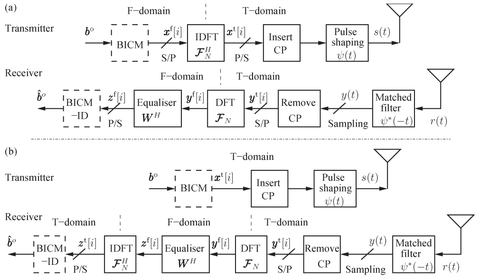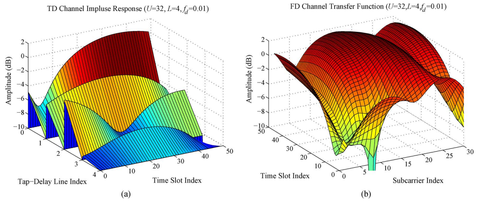Summary
In this treatise, we focus our attention on the cooperative uplink transmissions of systems beyond the LTE-Advanced initiative. We commence a unified treatment of the principle of single-carrier frequency-division multiple-access (FDMA) and the similarities and dissimilarities, advantages and weakness of the localized FDMA, the interleaved FDMA and the orthogonal FDMA systems are compared. Furthermore, the philosophy of both user cooperation and of cooperative single-carrier FDMA is reviewed. They are investigated in the context of diverse topologies, transmission modes, resource allocation and signal processing techniques applied at the relays. Benefits of relaying in LTE-Advanced are also reviewed. Our discussions demonstrate that these advanced techniques optimally exploit the resources in the context of cooperative single-carrier FDMA system, which is a promising enabler for various uplink transmission scenarios.
Description
The worldwide growth in both the number of mobile subscribers and their demand for increased rate mobile broadband services provided further impetus for the mobile telecommunication operators to improve both the capacity and the reliability of cellular networks.
When communicating over broadband channels imposing frequency-selective fading, conventional single-carrier (SC) modulation based systems require high-complexity time-domain (TD) equalizers having a large number of taps, to suppress the inter-symbol interference (ISI) due to time-dispersion. However, this disadvantage can be overcome by the family of multi-carrier (MC) modulation techniques, such as orthogonal frequency-division multiplexing (OFDM). In the context of MC communications, the original bit stream is divided into numerous low-rate substreams transmitted in parallel, which are mapped to subcarriers or subchannels. When using a high number of substreams, each subchannel becomes sufficiently narrow compared to the coherence bandwidth of the channel. Therefore, the signal transmitted over each non-dispersive subchannel experiences frequency-flat fading. As a result, the ISI of each frequency-domain (FD) substream becomes lower and a low-complexity FD equalizer having a single tap may be employed. However, this parallel transmission scheme would potentially require a bank of modulators and demodulators operating in parallel. Fortunately, this problem may be circumvented by employing the DFT and IDFT operations, which carry out the modulation/demodulation in a single step. More explicitly, the implementation complexity of OFDM is significantly lower than that of the parallel banks of modulators and the demodulators/equalizers.
Although MC modulation has some advantages over the conventional SC modulation, it suffers from the above-mentioned PAPR problem. Naturally, SC modulation having a significantly lower PAPR is more suitable for uplink transmissions than MC modulation, since the battery-size of mobile terminal (MT) is limited, hence requiring power-efficient non-linear amplifiers. To take advantage of the benefits of both SC and MC modulation, the SC received signal may be transformed to and equalized in the FD with the aid of the IDFT and DFT operations. This arrangement is referred to as SC modulation relying on frequency-domain equalization (FDE). Furthermore, by combining the SC-FDE and FDMA principles, SC-FDMA may rely either on TD or on FD signal generation. The FD signal generation approach, namely that of DFT-spread OFDMA, has been adopted by the 3GPP-LTE initiative (since Release 8) as well as by its advanced versions (e.g. LTE-Advanced Release 11) for SC-FDMA based uplink transmissions within the 4G wide area cellular broadband wireless systems.
In this treatise, we focus our attention on the cooperative uplink transmissions of systems beyond the LTE-Advanced initiative. Main contributions of this paper can be summarized as follows. A unified treatment of the principle of SC-FDMA is offered. The relationship between the TD and the time-frequency-domain (TFD) signal generation of SC-FDMA is detailed, by considering both the localized FDMA (LFDMA) and the interleaved FDMA (IFDMA) schemes. Finally, the similarities and dissimilarities, advantages and weaknesses of the LFDMA, IFDMA and OFDMA systems are compared. The cooperative SC-FDMA philosophy is reviewed and investigated in the context of diverse uplink topologies, relay resource allocation and signal processing techniques applied at the relays.



